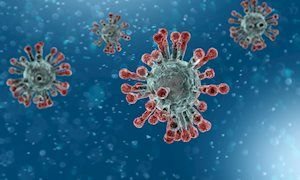
Radboud university medical center will investigate the effect of GAG bladder instillations on bladder pain syndrome, a condition where the bladder wall is inflamed. This study will start in order to provide scientific evidence for the effects of this therapy, so that it can be reimbursed in the future.
Bladder pain syndrome, also called interstitial cystitis, is a chronic benign condition of the urinary bladder. It involves an inflammatory reaction of the bladder wall, causing ulcers to form. It resembles symptoms of a bladder infection, but antibiotics do not help. Urologist Dick Janssen: "There are actually a kind of wounds on the bladder wall that are in continuous contact with urine, which is full of irritative waste products. Anyone who has ever seen diaper rash on a baby understands how much irritation urine can cause."
Pain and other symptoms often manifest themselves in the bladder and pelvic region, the lower abdomen and gives a continuous urge to urinate, even at night. Dr. Dick Janssen: "This condition really affects patients' quality of life. In addition to continuous pain complaints, they often have to go to the toilet at night, which leads to insomnia."
Some 4,000 people in the Netherlands have bladder pain syndrome, 600 to 800 of whom have these painful ulcers. 9 out of 10 patients are women, and the symptoms resemble those of people with rheumatism or Crohn's disease, known autoimmune diseases. Dick Janssen: "We don't know the exact cause of bladder pain syndrome yet, but it has several features of autoimmune diseases. When we take a biopsy (piece of tissue) from the bladder in patients, we see abnormally large numbers of immune cells that are responsible for the inflammation."
There is no cure, but patients and caregivers have had good experiences with Glycosaminoglycan (GAG) bladder instillation. This is because the inside of the bladder is lined with a protective layer, the Glycosaminoglycan (GAG) layer, consisting of hyaluronic acid and chondroitin sulfate. This layer does not function properly in bladder pain syndrome, leaving the bladder mucosa unprotected and inflamed. An inflamed bladder wall causes increasing pain when stretched (fuller bladder), causing patients to have to go to the toilet very often. The GAG bladder instillations contain molecules that form an extra protective layer, so that the bladder wall can recover and the symptoms are reduced.
Scientific basis for the study
The effect of these bladder instillations has not yet been sufficiently scientifically researched, and for this reason they were no longer reimbursed by health insurers. Therefore the Radboudumc, together with ten other hospitals, pharmaceutical companies and the patient association ICP, are starting a study to provide scientific support for this therapy. Dick Janssen, project leader of the study: "We expect the study to show that this treatment does indeed help, but it is important to substantiate our experiences scientifically. That is why we are pleased that we can now start this study."
It will be a special study, in which Dr. Thomas Hoogeboom from the IQ Healthcare department of Radboud university medical center is also involved. Dick Janssen: "Because it is such a rare disorder, it is difficult to include enough participants for a successful trial. Especially if, as is often the case in scientific research, you also need a placebo group and want to conduct the study in a double-blind fashion. Normally you use a traditional randomized controlled trial (RCT) for this purpose, which always requires large numbers of patients. That's why, in addition to an RCT, we also conduct what is known as an aggregated N-of-1 study." In this N=1 trial, a single patient repeatedly receives both a placebo and an active drug during defined periods, so that each study patient receives the same amount of treatment and we can detect in each individual patient whether the drug works. Combining the results of several N=1 trials can, it is expected, also provide group-level information and requires only half the number of study patients compared to an RCT. ‘’This study gives us the opportunity to directly compare two placebo-controlled study methods within one study’’.
For the duration of the study, the treatment will be reimbursed by the health insurance companies. An amount of 1.2 million euros has already been made available by Zorginstituut Nederland and ZonMw for the treatments and the study. The results are expected in four years' time.
-
Want to know more about these subjects? Click on the buttons below for more news.
More information
Pauline Dekhuijzen

wetenschaps- en persvoorlichter
Related news items

More than five million euros for research to improve palliative care Jeroen Hasselaar will lead research project with Horizon grant
15 June 2022 Jeroen Hasselaar will lead a large international research project. With a 5.3 million euro grant from the EU's Horizon program, he and his team want to improve palliative care for cancer patients, together with partners from nine European countries. read more
The future of laboratory animal research More attention to living conditions of laboratory animals
16 May 2022 On May 9, a meeting took place at the Radboudumc as a result of the launch of the Dutch Transparency Agreement on Animal Testing. The Radboudumc is one of the twenty signatories and has thus committed itself to openly and transparently communicate its vision and policy with regard to animal testing. read more



